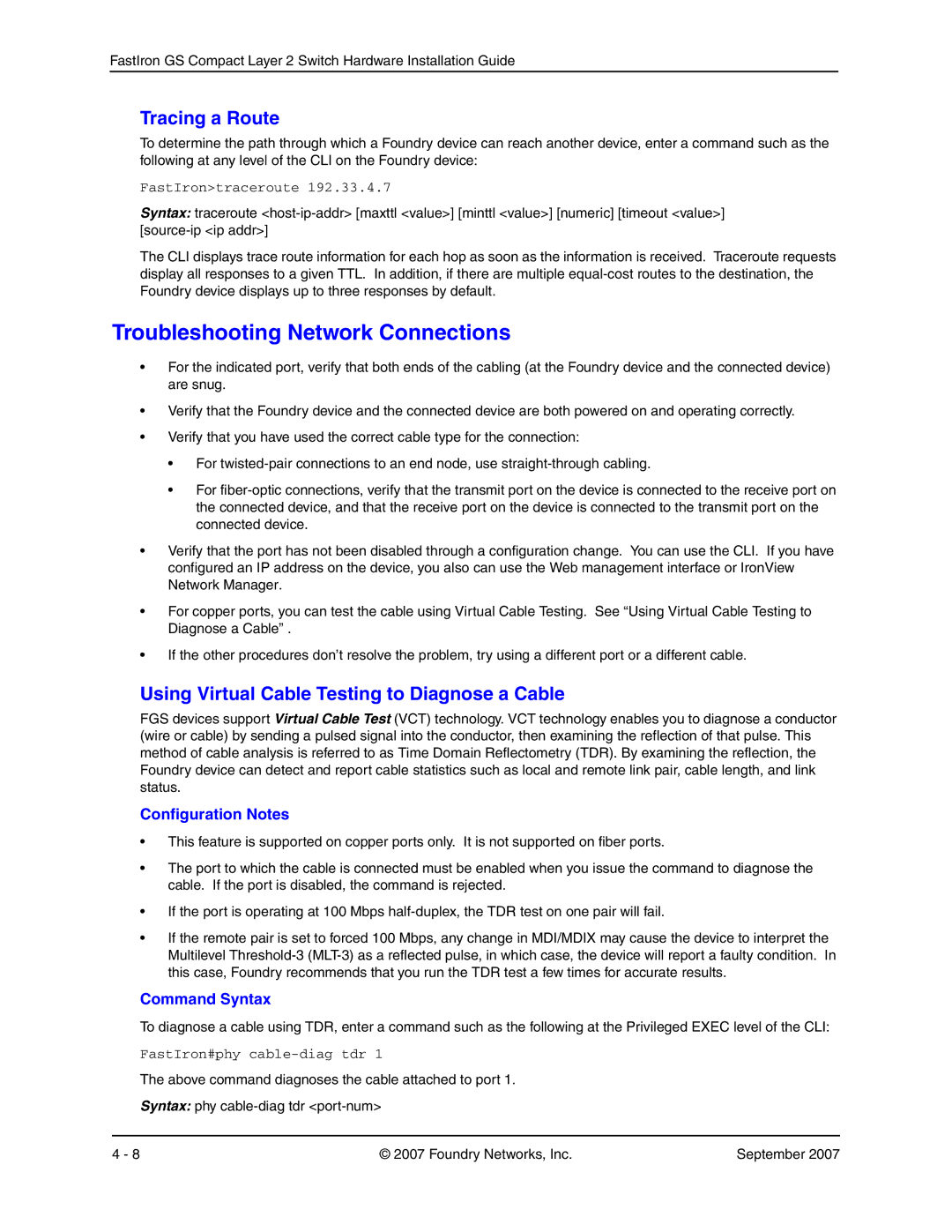
FastIron GS Compact Layer 2 Switch Hardware Installation Guide
Tracing a Route
To determine the path through which a Foundry device can reach another device, enter a command such as the following at any level of the CLI on the Foundry device:
FastIron>traceroute 192.33.4.7
Syntax: traceroute
The CLI displays trace route information for each hop as soon as the information is received. Traceroute requests display all responses to a given TTL. In addition, if there are multiple
Troubleshooting Network Connections
•For the indicated port, verify that both ends of the cabling (at the Foundry device and the connected device) are snug.
•Verify that the Foundry device and the connected device are both powered on and operating correctly.
•Verify that you have used the correct cable type for the connection:
•For
•For
•Verify that the port has not been disabled through a configuration change. You can use the CLI. If you have configured an IP address on the device, you also can use the Web management interface or IronView Network Manager.
•For copper ports, you can test the cable using Virtual Cable Testing. See “Using Virtual Cable Testing to Diagnose a Cable” .
•If the other procedures don’t resolve the problem, try using a different port or a different cable.
Using Virtual Cable Testing to Diagnose a Cable
FGS devices support Virtual Cable Test (VCT) technology. VCT technology enables you to diagnose a conductor (wire or cable) by sending a pulsed signal into the conductor, then examining the reflection of that pulse. This method of cable analysis is referred to as Time Domain Reflectometry (TDR). By examining the reflection, the Foundry device can detect and report cable statistics such as local and remote link pair, cable length, and link status.
Configuration Notes
•This feature is supported on copper ports only. It is not supported on fiber ports.
•The port to which the cable is connected must be enabled when you issue the command to diagnose the cable. If the port is disabled, the command is rejected.
•If the port is operating at 100 Mbps
•If the remote pair is set to forced 100 Mbps, any change in MDI/MDIX may cause the device to interpret the Multilevel
Command Syntax
To diagnose a cable using TDR, enter a command such as the following at the Privileged EXEC level of the CLI:
FastIron#phy cable-diag tdr 1
The above command diagnoses the cable attached to port 1.
Syntax: phy
4 - 8 | © 2007 Foundry Networks, Inc. | September 2007 |
